AI Overview and Summary
If all you need is basic transaction information, read the summary or click the “Explain with AI” button to get a high-level overview of what happened in this transaction. For example, clicking the Explain with AI button shows that this transaction involved swapping $83,188 $USDC for 546.97 $ORE using the Jupiter Aggregator v6 program.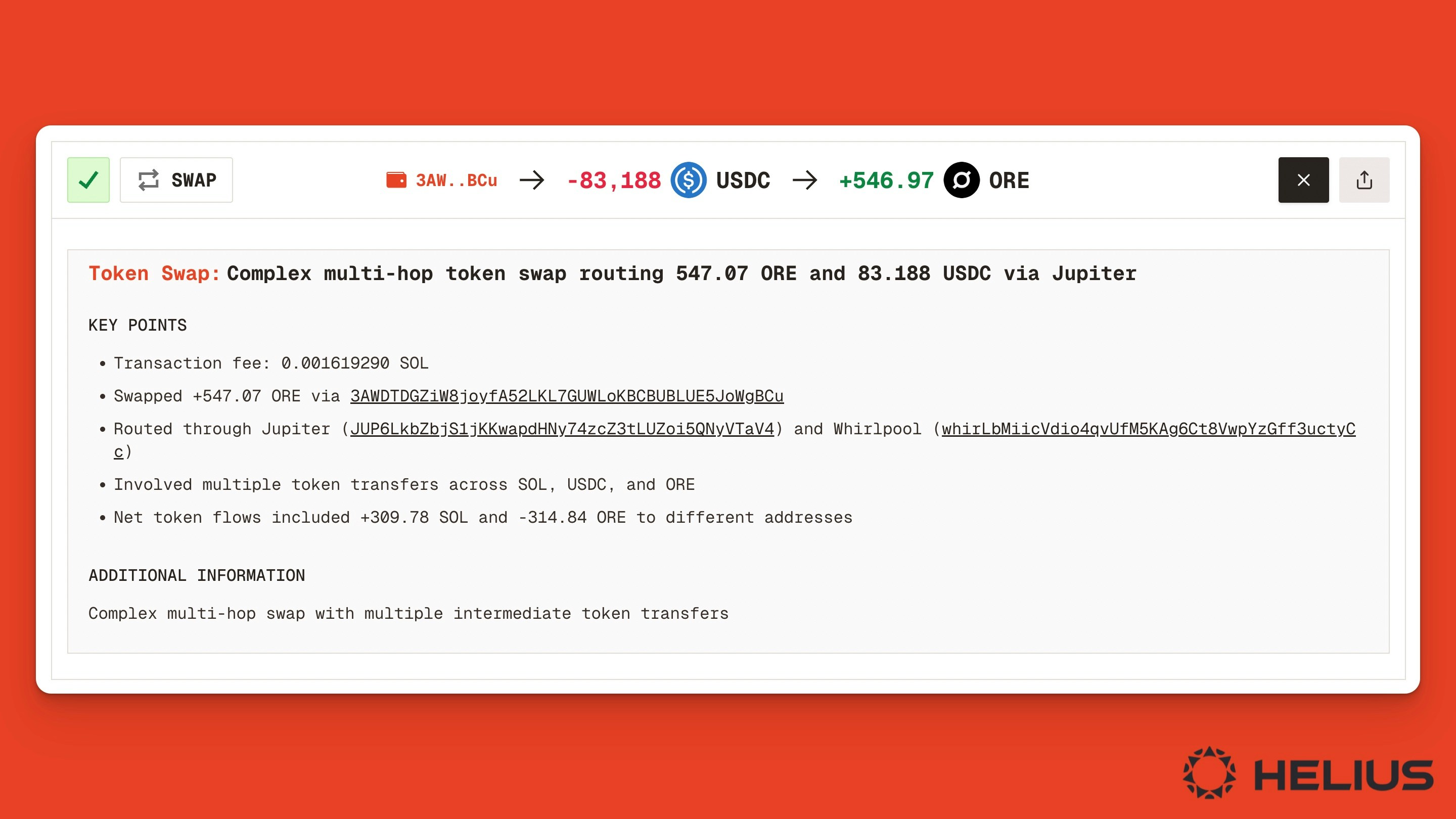
AI summary explains this transaction as a multi-hop token swap routing ORE for USDC via Jupiter.
Instruction Summary and Details
Scrolling down the page, the Instruction Summary shows all intermediate steps, such as transferring $USDC from the owner’s wallet to the Jupiter Aggregator Authority account.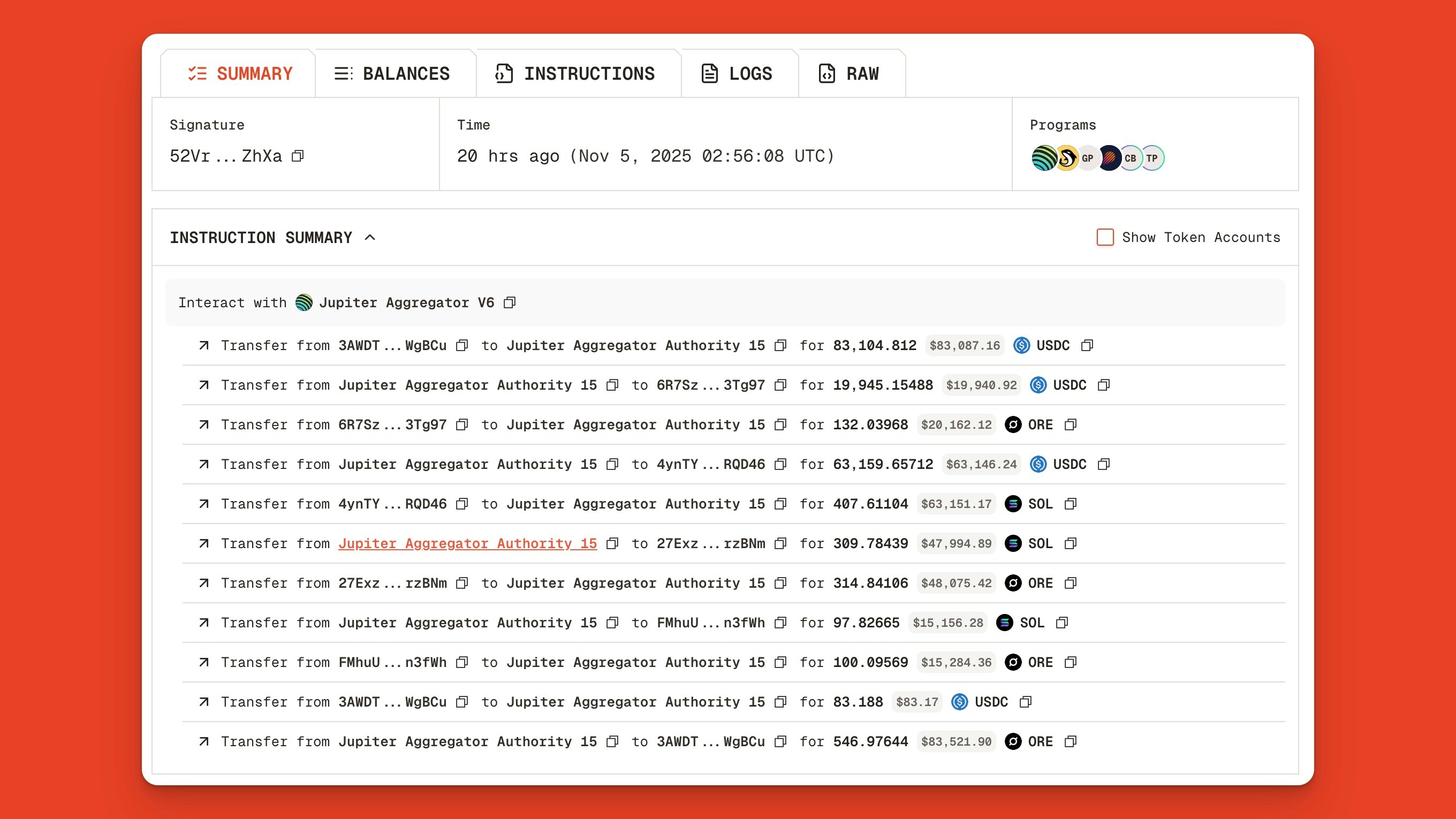
Summary list of instructions involved in the multi-hop swap on Jupiter.

Solana transaction details, including base fees, priority fees, fee payer, compute units consumed, confirmation, timestamp, and slot.
Transaction Balances
Clicking into the Balances tab, we can see a clear summary of the token balance changes for each address and market. We see the original wallet3AWDT…WgBCu is swapping USDC for ORE across multiple markets, including Orca, Goonfi, and Meteora DLMM, which processed parts of the trade.

Balance summary changes, including the owner’s wallet, liquidity pools, and prop AMMs (e.g., Goonfi) involved in the transaction.
Transaction Instructions
Clicking into the Instructions tab, we can see that the transaction included calling the Compute Budget Program and the Jupiter Aggregator v6 program. Expanding the Jupiter program, we see 15+ inner instructions, including invoking Solana’s token program, Orca’s Whirlpool Program, Meteora’s DLMM Program, and the GoonFi program (a Solana Prop AMM).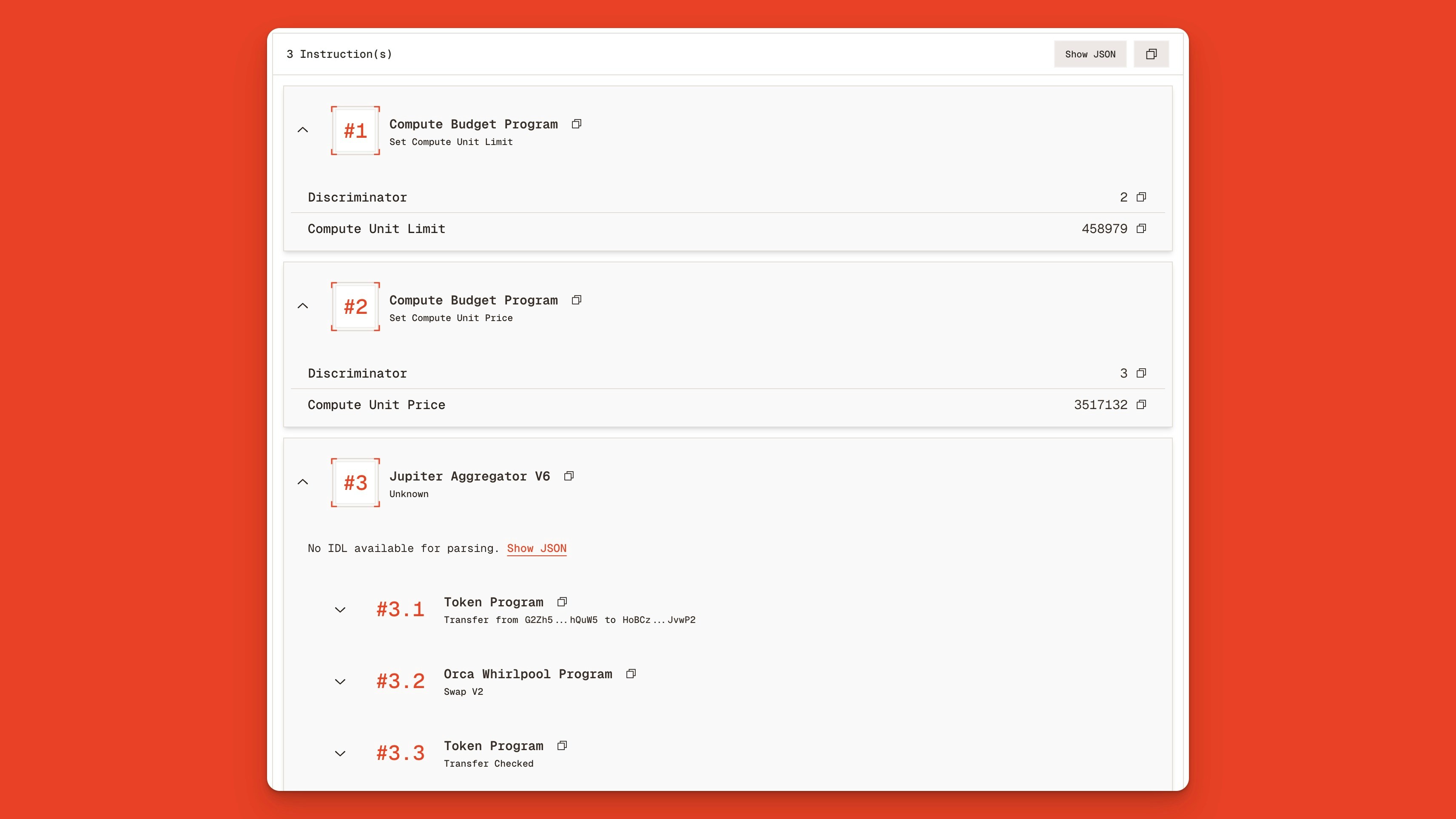

The second inner instruction involves Jupiter’s Aggregator v6 program, invoking a swap between $USDC and $ORE on Orca’s Whirlpool Program.

The third and fourth inner instructions show the Transfer Checked action from Solana's token program for USDC and ORE respectively.
Transaction Instruction Logs
To inspect the transaction logs, click the Logs tab. Here we can view the logs emitted by each program, which typically display the name of the called instruction, the status (i.e., success/failure), and the number of compute units consumed.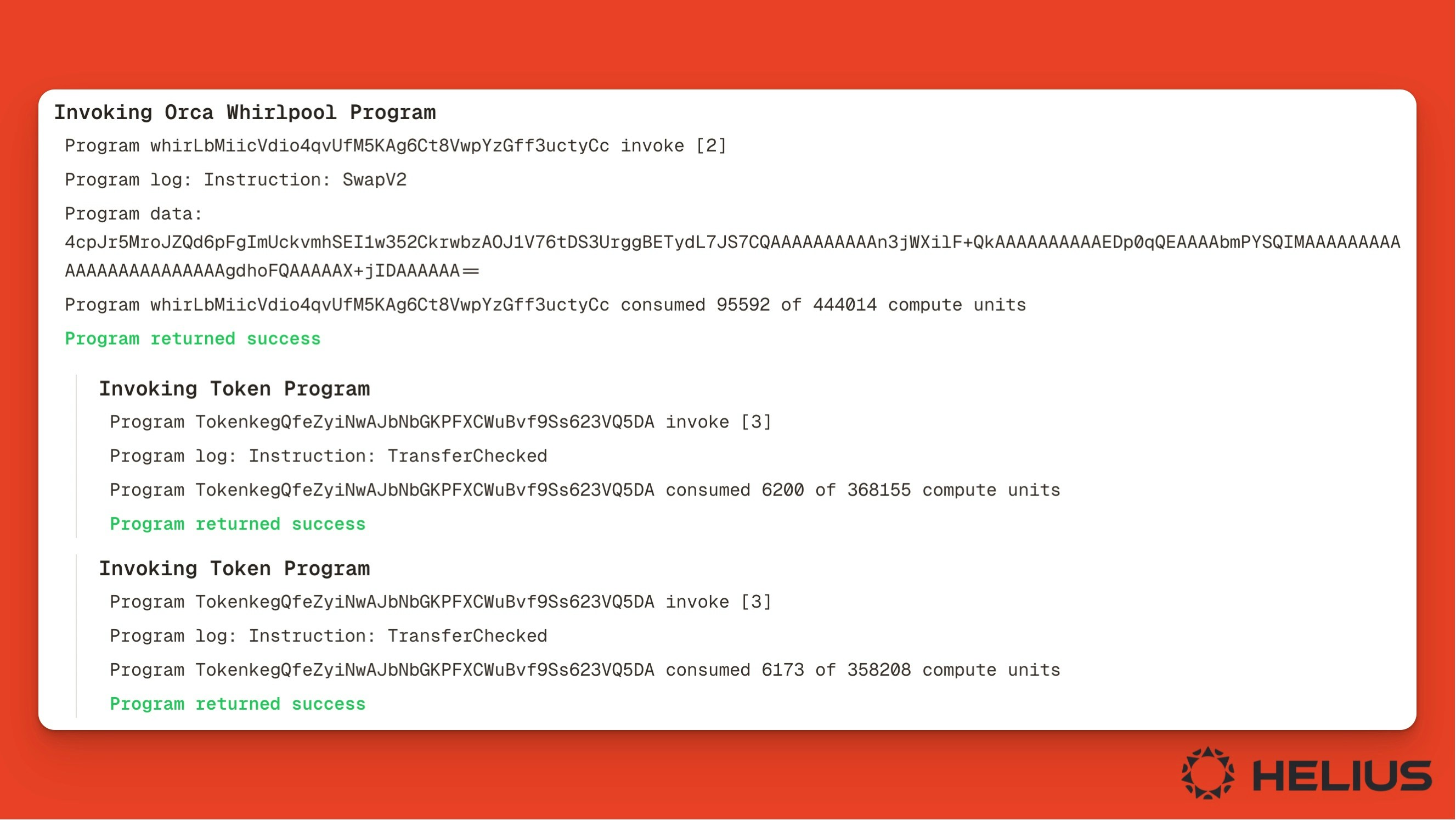
View of the Orca Whirlpool Program SwapV2 instruction logs.
Raw Transaction JSON
For the most granular output, click the Raw tab. Here, you can see each instruction either as raw JSON output, which can be made more human-readable by enabling the “Helius Enhanced” toggle.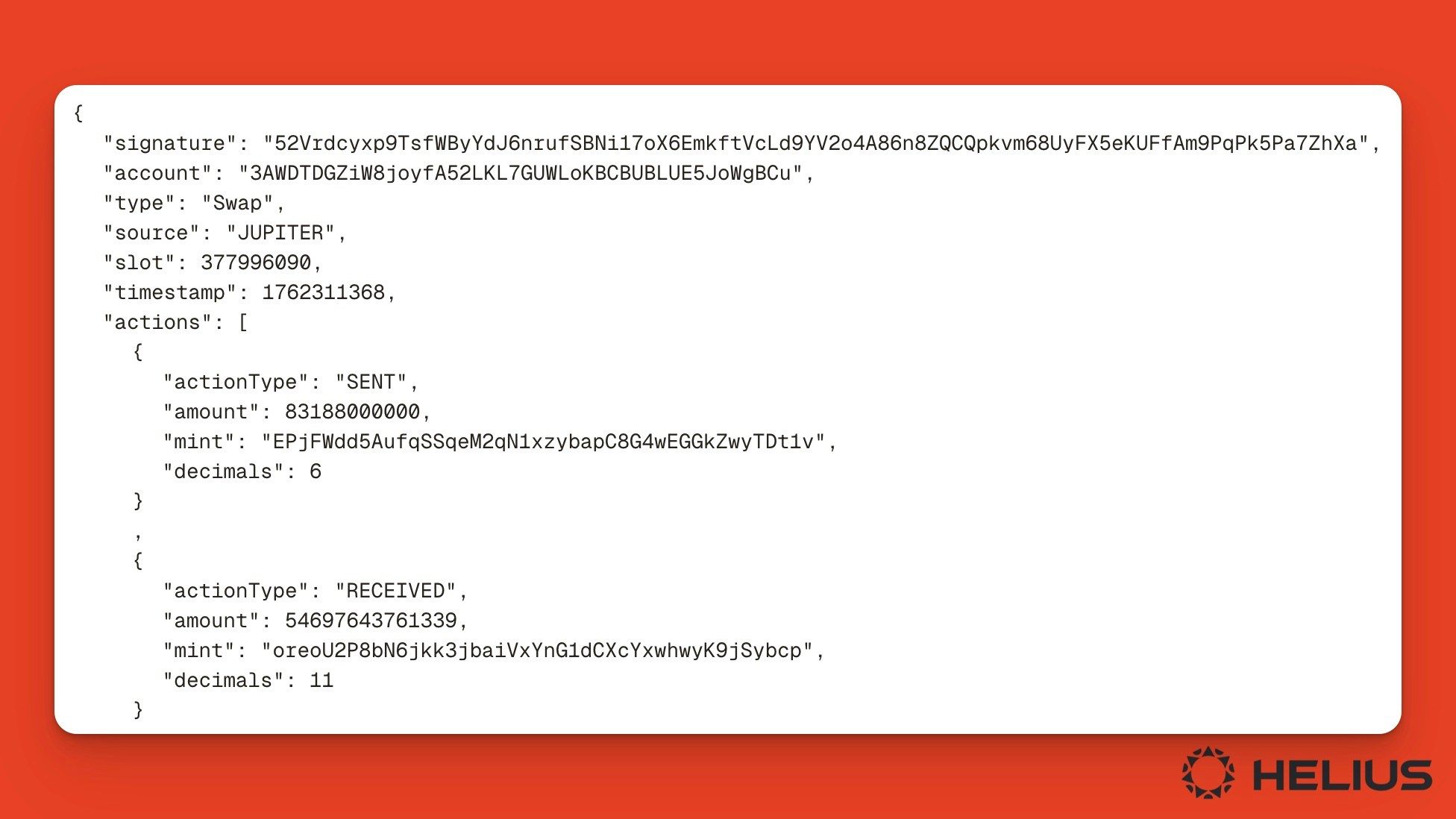
Helius Enhanced JSON transaction outputs.